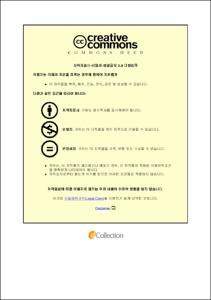고등어 폐액의 재이용을 위한 생물학적 분해
- Alternative Title
- Biodegradation of mackerel wastewater for reutilization
- Abstract
- 최근 해산물이 건강상의 이익 때문에 인기를 얻고 있어 소비가 꾸준히 증가하고 있다. 생선의 산업적 생산으로부터 다량의 수산 폐기물이 생성되고 수산 폐기물의 폐기는 지역 환경에 매우 영향을 미친다. 이러한 이유로 수산 폐기물의 친환경적 처리가 제시되고 있다. 이 연구에서 우리는 고등어 폐액을 생리 활성물질로 재활용하고 그거을 액체 비료로 전환시키기를 원한다. 고등어는 62.9~67.8%의 수분, 22.2~232%의 단백질, 7.4~12.3%의 지질 그리고 1.1~1.6%의 재로 구성된다. 특히, 고등어는 다른 생선보다 많은 단백질을 가진다. 혼합 균주는 단백질, 지질의 분해능을 가지며 염에 내성을 가진다. 그래서 그것들은 다른 균주에 비해 고등어를 잘 분해시킨다. 활발한 생물학적 분해에 의해 고등어 폐액의 CODCr과 TN의 제거율은 각각 77.7%와 83.0%였다. 또한, 모든 배양 상등액은 50배 이상의 희석배율에서 식물독소가 존재하지 않았다. 특히, 고등어 폐액에서 분해된 펩타이드는 높은 항산화활성을 나타낸다. 생분해된 폐액의 라디칼 소거능은 6시간마다 측정되었다. DPPH, ABTS, hydroxyl 라디칼 소거능은 각각 88.1%, 95.9%, 88.9%였다. 특히, 트립토판, 티로신, 메티오닌, 류신 같은 몇몇 아미노산은 자유라디칼의 소거에 기여한다. 그래서 우리는 TLC를 통해 이러한 아미노산을 확인했다. 또한 DNA damage inhibition 실험을 통해 분해산물이 DNA를 보호하는 것을 확인하였다.
In the recent years, fish consumption in the world is increased steadily because seafood is gaining popularity due to its health benefits. Large amounts of fishery wastes are generated from industrial processing of fish and the disposal of fishery wastes greatly affects the local environment. For this reason, eco-friendly treatment of fishery wastes have been suggested. In this study, we want to reutilize mackerel wastewater as bioactive compounds and convert it into liquid fertilizer. Mackerel is consisted of 62.9~67.8% of moisture, 22.2~23.2% of protein, 7.4~12.3% of lipid and 1.1~1.6% of ash. In particular, mackerel has more proteins than other fishes. Mixed microorganisms have degrading activity of protein, lipid and they are salt-tolerant. So, they degrade mackerel than other microorganisms. By the active biodegradation, removal percentages of CODCr and TN of mackerel wastewater were 77.7% and 83.0% respectively. The all culture supernatants were phytotoxin-free at the dilution ratios of more than 50-fold. Especially, peptides degraded from mackerel wastewater have high antioxidant activity. The radical scavenging activity of biodegraded wastewater was assayed on the every 6 hour broth. The highest value of DPPH, ABTS and hydroxyl radical scavenging activities was 88.1%, 95.9%, 88.9%. Especially, some amino acids such as tryptophan, tyrosine, methionine and leucine contribute to the scavenging of free radicals. So, we identified these amino acids through the thin layer chromatography. In addition, DNA damage inhibition was tested.
- Issued Date
- 2015
- Awarded Date
- 2015. 2
- Type
- Dissertation
- Publisher
- 부경대학교
- Alternative Author(s)
- Jung, Hyun Yi
- Affiliation
- 생물공학과
- Department
- 대학원 생물공학과
- Advisor
- 김중균
- Table Of Contents
- Ⅰ. INTRODUCTION - 1
Ⅱ. MATERIALS AND METHODS - 7
1. Microorganisms - 7
2. Preparation of mackerel wastewater - 7
3. Biodegradation of mackerel wastewater - 9
4. Analytic methods - 9
5. Seed germination test - 10
6. Antioxidant activity - 12
7. Determination of DNA protective activity - 15
Ⅲ. RESULTS AND DISCUSSION - 16
1. Biodegradation of mackerel wastewater - 16
2.Germination Index (GI) - 20
3. Antioxidant activity of biodegraded mackerel wastewater - 23
4. Protective effect against DNA damage - 30
Ⅳ. CONCLUSION - 32
Ⅴ. ACKNOWLEDGEMENT - 33
Ⅵ. REFERENCES - 36
- Degree
- Master
- Files in This Item:
-
-
Download
 고등어 폐액의 재이용을 위한 생물학적 분해.pdf
기타 데이터 / 760.28 kB / Adobe PDF
고등어 폐액의 재이용을 위한 생물학적 분해.pdf
기타 데이터 / 760.28 kB / Adobe PDF
-
Items in Repository are protected by copyright, with all rights reserved, unless otherwise indicated.